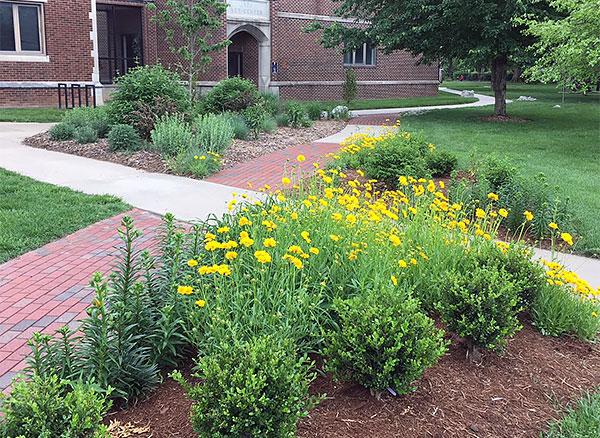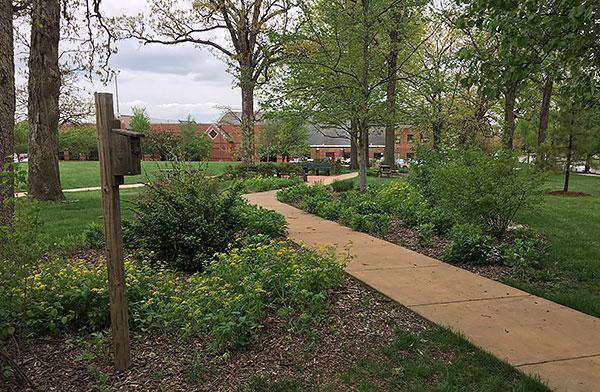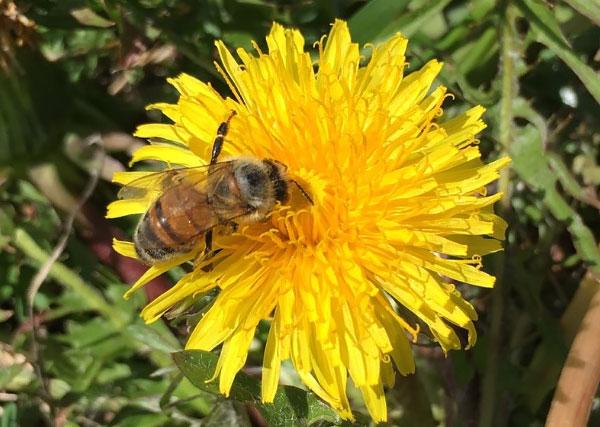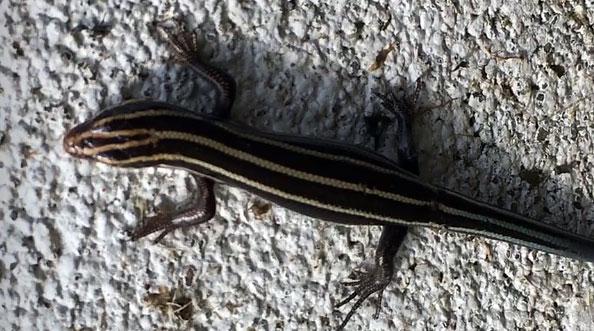Diversity Abounds...
Several years ago, when I started as the Head Groundskeeper at Drury University, I came into a campus that was one dimensional and lacked meaningful diversity in any terms. The campus was comprised mostly of shade trees and turfgrass. Having recently worked at a municipal Springfield park that was abundantly planted and had been growing in for seven years (post installation), I was taken aback by the stark appearance of the campus. This is not to say it didn't look well-tended or thoughtfully laid out. It just looked plain. While I did note that there was a dearth of flowers and smaller trees, I didn't think of it in terms of diversity. Now, after several years of hard work, I see how beneficial the pursuit of increasing diversity is to a landscape.
Diversity Stabilizes the landscape
Diversity (biodiversity, design diversity, management diversity) is an important objective for the landscape. Increasing biodiversity improves the ability of the landscape to respond to environmental changes. If our landscape consists of only one plant, and we get an unusual weather event, an entire population could be wiped out. Biodiversity also prevents one organism from dominating the landscape to the detriment of others. If a pest outbreak occurs, the susceptible target could be decimated, but unsusceptible organisms will not be.
Design and maintenance diversity also prevents our landscapes from becoming monotonous. Design diversity could be as simple as adding native plants to a landscape. Maintenance variation could be changing mow patterns or employing FRAC codes to prevent resistance.

Planting variety helps improve more than just plant biodiversity.
Even in the relatively homogenous landscape (strategically homogenous, (think golf course or sports field) diversity is sought after. Turfgrass blends/mixes are SOP, and aesthetically designed roughs and landscaping amenities are common management principles.
Stratified planting
Here at Drury University a means to increasing both biodiversity and design diversity is through stratified planting. Stratified planting means blending large trees, small trees, shrubs, perennial plants/flowers and turf. Within these plant types a mix of deciduous/evergreen is also beneficial. This increase in plant diversity adds habitat for organisms. There are birds that nest closer to the ground and there are others that prefer elevated tree cavities. Stratified plantings also help to provide a variety of food sources for animals and birds. Providing a range of foods promotes biodiversity. Stratified plant arrangements also capture rainfall which benefits the environment by decreasing runoff and cleaning pollutants.

Stratified planting provides layered habitats for different animals and insects.
Plants, plants, and more plants
A wide variety of plant diversity is important for maximizing the health and benefits of the landscape. An obvious benefit of plant diversity is a rotation of bloom. The aesthetics of a rotation of bloom is a highly desirable aesthetic feature in the landscape. Perennial plants have lower maintenance impact because they are planted once, and can potentially be divided in the future to be planted elsewhere. Early blooming plants are vital forage when insects and animals are coming out of the winter period to replace spent reserves. Some native plants also have a mutualistic relationship with other organisms (Milkweed/Monarchs is one such widely known relationship). Some plants can also be used to help restore the ecosystem (legumes fix Nitrogen) and a matrix of plants can help decrease water runoff and soil erosion.

Dandelions are an important early-season food source for bees.
Birds and Beasts
An indicator of ecosystem health is the prevalence of birds and animals in the landscapes we manage. This is not to say that every landscape must strive to have a menagerie of animals roaming the grounds, but some diversity of animal residents shows you have a healthy ecosystem. On our campus we have groundhogs, skunks, squirrels and rabbits (nothing extraordinary here). We also have a healthy range of birds including a nesting pair of Red-Tail Hawks, nesting Eastern Bluebirds, Kingbirds, Killdeers and Scissortail Flycatchers (again the usual suspects). What is remarkable, though, is that none of these animals and birds were present six years ago. If they were seen on campus, they were only passing through, not calling it home. This is strong diversity for an urban setting. Just this year I saw my first Black Snake on campus and I couldn't be happier.
What is remarkable, though, is that none of these animals and birds were present six years ago. If they were seen on campus, they were only passing through, not calling it home.
The Next Steps
Improving the ecological health of the Drury University campus is a worthy goal. A landscape that demonstrates diversity in different forms is pleasing to patrons, plus can help support the organizational goal of demonstrating sustainability and environmental commitment. As green-space dwindles, and development changes the appearance of the landscape, managing our grounds as refuge for plants, animals, birds and insects is increasingly vital. Biodiversity is a key component of nature, and should be a key component for Grounds Managers also.

Diversity is essential in the landscape. Who can really say what is the most important species?


0 Comments
Recommended Comments
There are no comments to display.